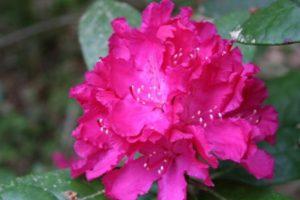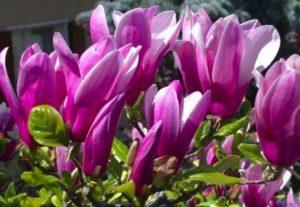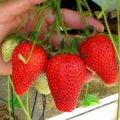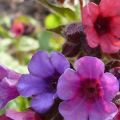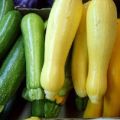Description of astilba varieties Diamant, planting and care, wintering and reproduction
Astilba Diamant is chosen, first of all, because of its high decorative effect and frost resistance. This plant of extraordinary beauty is able to grow in open areas and in partial shade. A perennial herb naturally occurs in deciduous forests and on river banks. In order for Astilba Diamant to actively grow and develop, it is necessary to know its features, the subtleties of planting work and care.
The history of breeding Astilba Diamant
Diamant was bred by the renowned breeder Arendsa. By crossing the tall astilba David, 40 hybrid forms were obtained, including the Diamond, which is distinguished by snow-white flowers.
Description and characteristics of the plant
In order for astilba Diamant to effectively decorate the garden, bloom for a long time and not get sick, it is necessary to familiarize yourself in more detail with its characteristics and distinctive features.
Life span
On average, a culture can live 5-7 years. In one place, the bush is able to bloom for 10 years, if the transplant is not done, then you can extend the growth period of astilbe Diamant by periodically adding a fertile layer of soil.
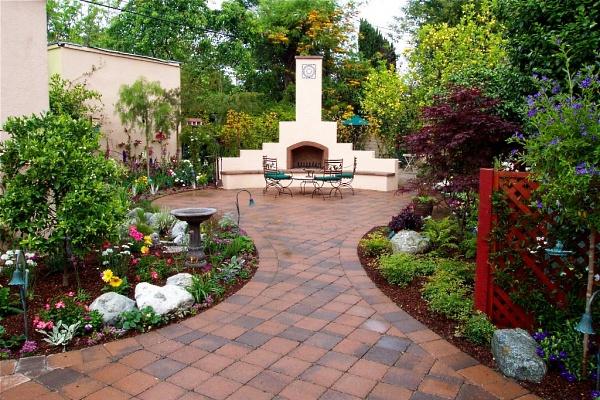
Bush height and leaf shape
Astilba Diamant from the Saxifrage family is distinguished by a long flowering period and relatively undemanding care. The height of the bush reaches almost 90 centimeters, its width is 40-50 centimeters. On fairly strong twigs, there are alternately dark green leaf plates with complex feathers. They are medium in size and look quite original.
Inflorescence shape and color
Astilba Diamant does not have large flowers, they are small, only 0.5 centimeters in diameter. The flowers are simple, bright pink, and have a pleasant smell. Inflorescences are of wide paniculate type.

Flowering period
Large cluster inflorescences bloom in June and wither in September. Astilba Diamant is suitable both for cutting and for decorating a personal plot.
What frosts are terrible for astilbe
Astilba Diamant is distinguished by sufficient endurance, frost resistance zone 3-4. But on the territory of the northern regions, it is recommended to additionally protect the bushes from freezing temperatures.
Susceptibility to disease and insects
Astilba Diamant is rarely attacked by harmful insects and dangerous diseases. A perennial herb has increased immunity to both parasites and ailments. Only under unfavorable growing conditions and serious disturbances in care can such troubles arise as the appearance of secretions of the larvae of the slobbering penny. They are removed mainly by hand.

It is possible to detect this small pest by a characteristic foam solution, which is very similar to saliva. It is in it that the parasite lays its offspring. The result of the life of the penny is twisted leaf plates and the loss of their natural green color. If you do not take action, then Astilba Diamant will begin to fade and die.
Agrochemicals such as Aktara, Karbofos, Konfidor, Rogor are highly effective against the penny.
Sometimes bushes can be affected by the strawberry nematode that lives on the leaves and buds, and the rootworm nematode, which seriously damages the root system. It is almost impossible to cure a sick astilba, it is removed from the ground and destroyed.

In the event of bleached foci on the leaf plates, the perennial bush should be treated with a working solution based on Karbofos or Aktara. This sign clearly indicates the presence of such a pest as a cicada on astilbe.
From diseases, the plant can be threatened by root rot, which often occurs due to excessive moisture in the soil. The bush should be removed from the soil, cut off the rotten areas of the roots, treated with a solution of potassium permanganate and transplanted to a new place.
If bacterial spotting has been identified, then copper-based treatments are needed. It is practically impossible to cure viral diseases.
The use of a flower in landscape design
Due to its attractive appearance, large luxurious inflorescences, astilbe Diamant is actively used in landscaping open areas. Bushes look especially harmonious along the curb, in combination with other flower crops, in a flower bed. Another winning option for placing chic bushes with a pleasant smell and bright flowers is planting in a row.

An excellent tandem of Astilba Diamant with chic peonies, shaggy conifers, which also help to cover their root system from drying out and the scorching sun. Considering the fact that astilba Diamant is able to actively grow and develop even in shady terrain, it is good to place it near water bodies, ponds, where the level of humidity is high.
Regardless of where and in what combination Astilba Diamant will be used, it will always attract attention with its original appearance.
How to plant a herb in the area
Astilba Diamant, although it is an unpretentious plant, knowledge of the planting rules will make it much easier to care for it in the future and get abundant and long flowering.
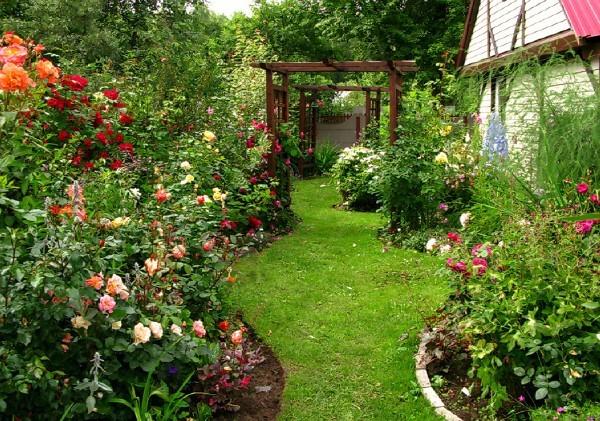
Optimal landing place
When choosing a glade for planting astilba Diamant, you should give preference to well-lit areas. Shaded places are also suitable, the area near an artificial reservoir, a fountain. A perennial herb is favorably influenced by planting it from the north side of the building.
It is best if you plant the bushes on loamy soil, where the groundwater is located close. The acidity level of the soil should be in the range of 5.5-6.5.
Dates and technology of disembarkation
The recommended dates for planting operations are May-early June. Before planting a plant, it is necessary to dig up the selected area and clear it of weeds. Add mature manure, compost or rotted peat at the rate of 2 buckets of organic matter per 1 square meter. Astilba Diamant planting technology consists of the following steps:
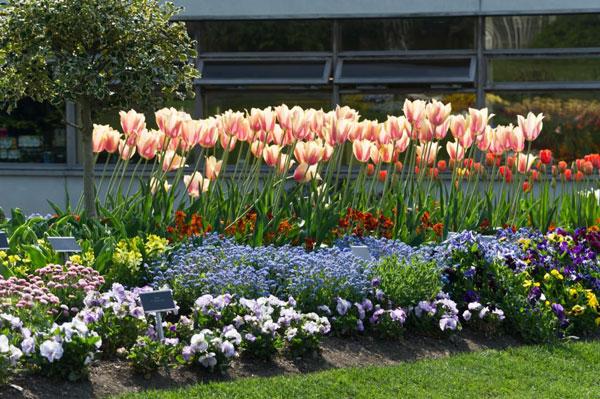
- Dig a hole 20-30 centimeters wide and deep.If you plan to plant several bushes, then the distance between them should be 30 centimeters.
- Add wood ash (half a glass) and mineral fertilizer (1 tablespoon) to the hole.
- Spill with water.
- Pour a small layer of fertile soil and place a seedling in the center of the pit, spreading its roots on different sides.
- Sprinkle over roots and tamp lightly.
To retain moisture, the soil under the bushes should be mulched with sawdust, pine needles, humus or peat.
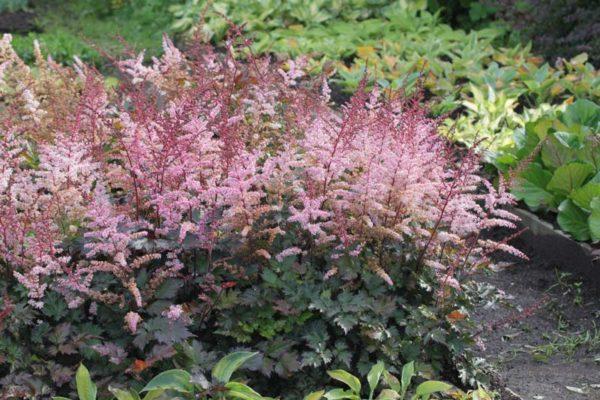
Recommended neighborhood with other cultures
The best option for placing astilba Diamant is planting next to thujas, juniper bushes, near hosts and ferns. An excellent composition is obtained by combining astilba with hellebore, incense, rogers, cuff. Diamond with aquilegia, daylilies, lilies, ferns, phlox and geraniums also looks spectacular.
How to care for "Diamant" in the garden
Caring for a perennial is quite simple, it must be regularly moistened, fed and protected from freezing temperatures.
Regularity of watering
Since Astilba Diamant is moisture-loving, it is always necessary to control the level of moisture in the soil. Irrigation should be done regularly. To protect the roots of the plant from drying out will allow such a simple agro-technique as mulching. In addition, the soil does not have to be constantly loosened in order to exclude oxygen starvation of the underground part of the perennial plant.
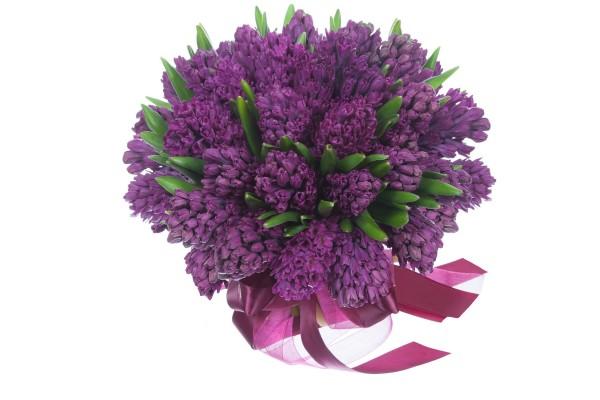
Especially the bush needs abundant moisture at the stage of inflorescence formation. In the hot season, water procedures are recommended in the morning or evening. Otherwise, during the period of active sun, burns occur on the leaves.
Which fertilizer does the variety prefer?
To achieve the desired effect when growing astilba Diamant, it is necessary to carry out feeding procedures throughout the growing season. In the spring, it is advisable to apply fertilizers with a high concentration of nitrogen into the soil.
For these purposes, decayed vegetation is best suited, which is added when hilling bushes.
In mid-June, it is recommended to add a potassium preparation to the soil. To prepare the working solution, use 2 tablespoons of potassium salt per 10 liters of water. When the flowering phase ends, phosphorus-containing compositions will be required, where 20 grams of the drug is used per garden planting.
Shelter roots for the winter
To ensure the bright flowering of Astilba Diamant in the future, it is necessary to properly prepare it for wintering. First of all, the bush must be cut to ground level, and the place must be mulched with peat or humus. For reliability, it is still covered with spruce branches.
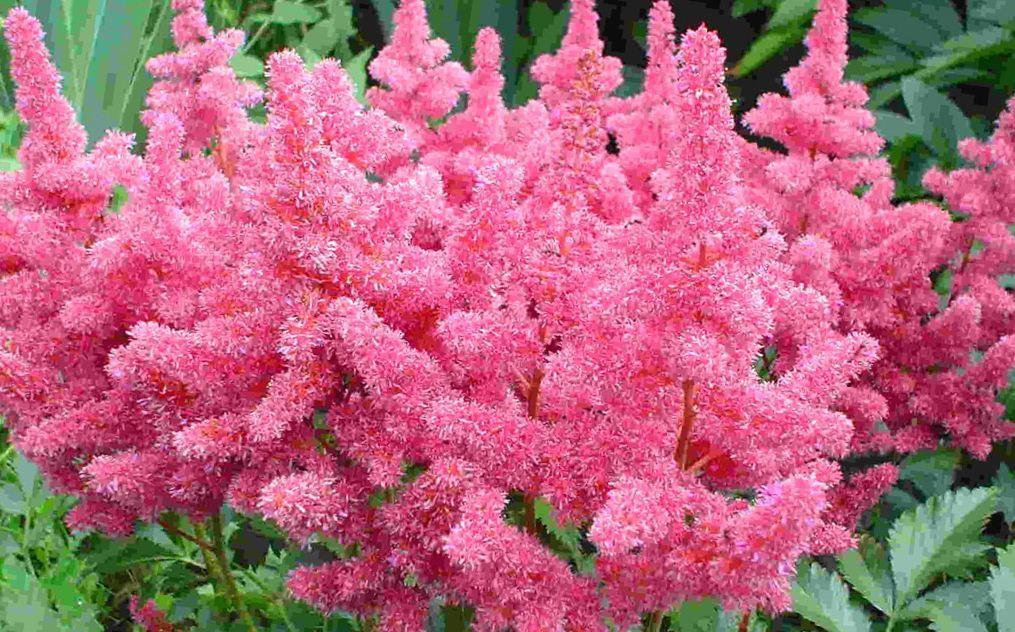
Reproduction methods
It is possible to breed astilba Diamant on the site both by seed and by dividing the bush. The collected last year's seeds are laid in sandy-peat (1: 3) soil by 5-7 millimeters, moistened with a spray bottle, covered with a film and placed in a room where the air temperature is +20 degrees. The pick is made after the formation of two true leaves. Sowing is done in March-April.
Delenki are obtained from a plant extracted with an earthy clod. It is divided into 2-3 parts, the main thing is that each one has from four points of growth. They are planted in prepared holes at a distance of 30 centimeters.
Astilba Diamant - rightfully belongs to the luxurious decorative crops. The plant fits perfectly into any flower arrangement, does not require special skills in growing. The main thing is to adhere to the rules of agricultural technology and the result will not be long in coming.
